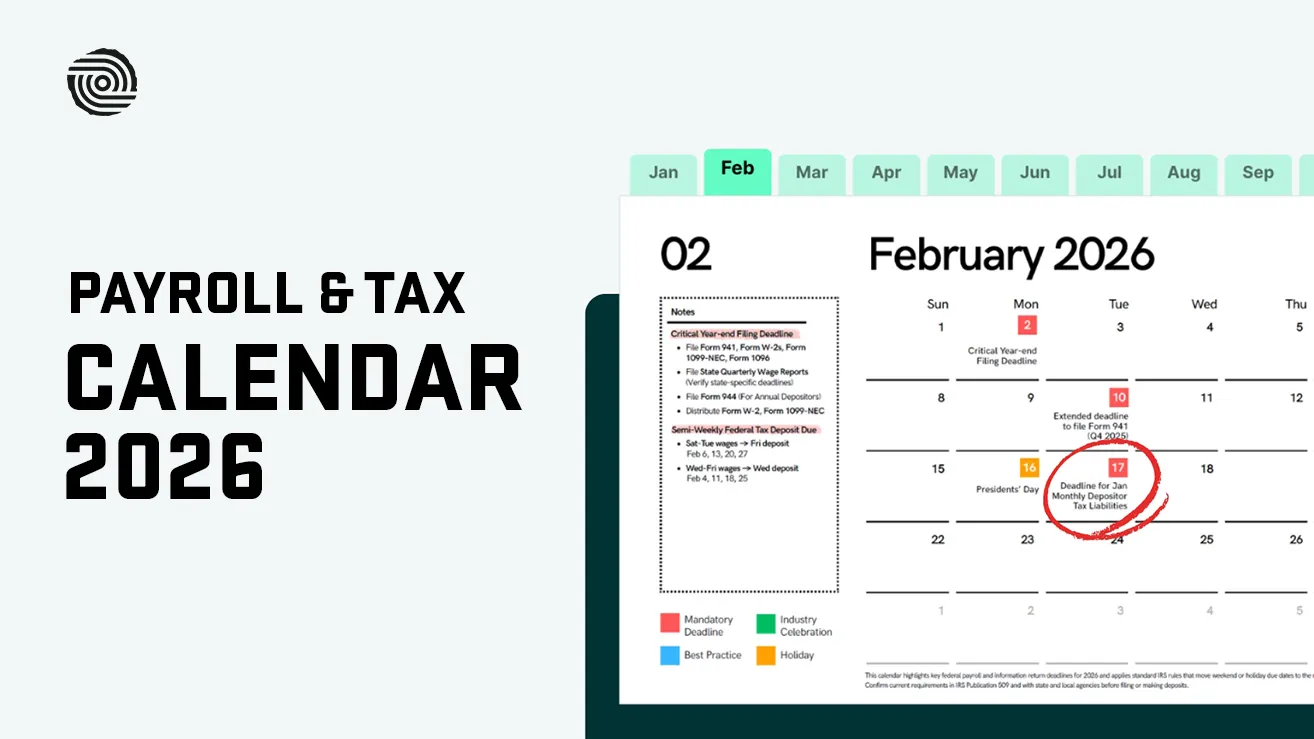

In the construction industry, safety isn't just a moral imperative—it's a financial necessity. Workplace injuries and illnesses not only endanger workers but also inflict staggering costs upon construction companies.
Current Industry Data (2024-2025):
- Average cost per workers' compensation claim: $48,500 (up from $41,757 in 2020-2021)
- Average cost per medically consulted injury: $40,000-$42,000
- Lost-time claims average: $75,000+
- Fatal injury claims: $1.39 million (includes wage losses, medical expenses, administrative costs, and employer expenditures)
- Average recovery time: 80 workdays per injury (up from 73 days in 2015-2019)
- Total annual cost of construction-related injuries and fatalities: $11.5 billion
Beyond direct costs, indirect expenses—including productivity losses (with workers now missing an average of 80 days per injury), replacement worker training, equipment damage, project delays, and reputational harm—can multiply the total impact by 4-6 times the direct costs. According to OSHA, construction companies save roughly $4 to $6 for every $1 invested in safety programs.
2025 Workers' Compensation Trends
Factors Driving Costs Higher:
Wage inflation rose at 4.8% from March 2023 to March 2024, directly impacting workers' compensation premiums since they're calculated based on payroll
- Aging workforce: Employees over 60 now make up 16% of all claims (up from 13% in 2015-2019), with workers aged 50+ accounting for 41% of injuries
- Higher employee turnover: Workers injured during their first year on the job constitute 36% of all claims and 34% of total costs
- Labor shortage: An estimated 546,000 construction jobs remain unfilled, leading to overworked employees and less experienced workers
- Advanced medical technology: Better treatments extend life expectancy for injured workers (e.g., paralyzed workers now live 30 years vs. 10 years previously), increasing long-term claim costs. Prosthetics costs have risen from $5,000 to $40,000
- Extended recovery times: Employees now miss an average of 80 workdays per injury, up from 73 days in 2015-2019
Current Premium Landscape:
- Average monthly workers' comp premium for construction industries: $337
- High-risk construction trades: Average $517 per month
- Small businesses overall average: $45 per month or $542 annually (though construction is significantly higher)
- 2024 market outlook: While a hard market is unlikely, budgeting for cost increases is recommended due to wage inflation and aging workforce factors
The solution? Experience Modification Rate (EMR) benchmarking—a powerful strategy that evaluates and compares your company's safety performance against industry standards and top performers.
Understanding EMR in Construction
What is the Experience Modification Rate?

The Experience Modification Rate (EMR) is a numerical representation of your company's workers' compensation claims history, used by insurance carriers to calculate your premiums. It's one of the most critical metrics in construction business management.
How EMR is Calculated
Your EMR score is calculated by comparing your actual workers' compensation claims costs and payroll data over a three-year period against the expected costs for your industry classification code.
The EMR Formula:EMR = (Actual Primary Losses + Actual Excess Losses × Weighting Factor) / (Expected Primary Losses + Expected Excess Losses × Weighting Factor)
Understanding Your Score:
- 1.0 = Industry average performance
- Below 1.0 = Better than average (0.8 = 20% better)
- Above 1.0 = Higher than average risk (1.2 = 20% worse)
The Direct Impact on Your Bottom Line
Your EMR score directly affects your workers' compensation insurance premiums:
Example 1: Below-Average EMR
- Annual workers' comp premium (at 1.0 EMR): $250,000
- Company EMR: 0.75
- Actual premium: $187,500 (savings of $62,500)
Example 2: Above-Average EMR
- Annual workers' comp premium (at 1.0 EMR): $250,000
- Company EMR: 1.3
- Actual premium: $325,000 (additional cost of $75,000)
Note: With 2025 average construction premiums at $337/month ($4,044 annually per employee), a 250-employee company would have approximately $1,011,000 in annual premiums at 1.0 EMR, making EMR improvements even more impactful.
Why EMR Matters Beyond Insurance Costs

- Competitive Bidding Advantage: Many project owners and general contractors require EMR scores below 1.0 for bid qualification
- Prequalification Requirements: Some projects won't accept contractors with EMR above specific thresholds (often 1.0-1.2)
- Company Reputation: A low EMR signals commitment to safety and professional operations
- Access to Larger Projects: Major commercial and infrastructure projects often have strict EMR requirements
- Subcontractor Relationships: General contractors prefer working with subs who won't negatively impact their consolidated EMR
The Power of EMR Benchmarking
EMR benchmarking is the process of systematically comparing your company's safety performance metrics against:
- Industry standards for your construction sector
- Top-performing competitors in your market
- Your own historical performance trends
- Best-in-class safety leaders across all construction segments
Benefits of Implementing EMR Benchmarking
Financial Benefits:
- Reduce workers' compensation premiums by 15-40%
- Lower indirect costs associated with incidents
- Improve cash flow and profitability
- Increase bonding capacity

Competitive Benefits:
- Win more bids with favorable EMR scores
- Access projects with strict prequalification requirements
- Differentiate from competitors
- Build stronger relationships with general contractors
Operational Benefits:
- Identify high-risk activities and job sites
- Improve resource allocation for safety programs
- Enhance claims management efficiency
- Foster a culture of continuous improvement
Workforce Benefits:
- Reduce workplace injuries and illnesses
- Improve employee morale and retention
- Attract top talent who value safety
- Demonstrate commitment to worker well-being
Key Performance Indicators for EMR Benchmarking
Key Performance Indicators (KPIs) are quantifiable metrics that measure and evaluate the effectiveness of your safety programs and claims management processes, ultimately impacting your EMR score.

1. Loss Control KPIs
Total Recordable Incident Rate (TRIR)
- Formula: (Number of recordable incidents × 200,000) / Total hours worked
- Industry benchmark (2025): 2.3-2.8 for construction
- Top performers: Below 1.0
Days Away, Restricted, or Transferred (DART) Rate
- Formula: (DART cases × 200,000) / Total hours worked
- Industry benchmark (2025): 1.4-1.9
- Top performers: Below 0.75
Lost Workday Rate
- Formula: (Days away from work × 200,000) / Total hours worked
- Industry benchmark (2025): 35-55 days per 100 workers (increasing due to aging workforce)
- Top performers: Below 20
Return-to-Work Success Rate
- Percentage of injured workers returning within 30 days: Target 80%+
- Percentage returning to full duty within 90 days: Target 90%+
Average Cost per Claim
- Medical-only claims: Target below $25,000
- Lost-time claims: Target below $70,000
- Overall average: Target below $45,000 (industry average now $48,500 in 2025)
2. Claims Management KPIs
Claim Reporting Timeliness
- Percentage reported within 24 hours: Target 95%+
- Average time to first report: Target <8 hours
Claim Processing Time
- Time to initial adjuster contact: Target <48 hours
- Time to claim closure (medical-only): Target <60 days
- Time to claim closure (lost-time): Target <180 days
Claim Denial Rate
- Industry average: 10-15%
- Target: <5% (indicating proper initial screening)
Claim Litigation Rate
- Industry average: 5-8%
- Target: <3%
Reserves Accuracy
- Percentage of claims settled within 20% of initial reserve: Target 85%+
3. Safety Program Effectiveness KPIs
Safety Training Participation
- New hire orientation completion: Target 100%
- Annual refresher training completion: Target 95%+
- Specialized training (confined space, fall protection, etc.): Track by category
Safety Inspection Frequency
- Weekly job site inspections: Target 100% compliance
- Daily toolbox talks: Target 95%+ attendance
- Monthly safety committee meetings: Track attendance and action items
Near Miss Reporting Rate
- Ratio of near misses to actual incidents: Target 10:1 or higher
- Near miss reports per 100 workers: Target 50+ annually
Safety Observation Program Participation
- Observations per employee per month: Target 2+
- Percentage of observations resulting in corrective action: Track trend
Equipment Inspection Compliance
- Percentage of equipment with current inspections: Target 100%
- Overdue inspections: Target 0
4. Leading vs. Lagging Indicators
Leading Indicators (Predictive):
- Safety training hours per employee
- Number of safety meetings conducted
- Near miss reports submitted
- Safety audits completed
- Corrective actions implemented
Lagging Indicators (Historical):
- TRIR and DART rates
- Lost workdays
- Workers' compensation costs
- EMR score
- Claim frequency and severity
5. Data Quality KPIs
Data Entry Accuracy
- Error rate in incident reports: Target <2%
- Completeness of claim records: Target 98%+
- Timeliness of data entry: Target <24 hours from incident
System Integration
- Percentage of automated data transfers: Track and improve
- Data reconciliation frequency: Monthly minimum
The Benchmarking Process: A Step-by-Step Guide
Phase 1: Preparation (Weeks 1-2)

Step 1: Define Your Objectives
- Identify specific goals (reduce EMR by X%, decrease lost-time incidents by Y%)
- Determine timeline for improvements
- Establish budget for safety initiatives
Step 2: Assemble Your Benchmarking Team
- Safety director/manager (lead)
- Operations/project managers
- HR representative
- Finance/accounting (for cost analysis)
- Insurance broker/risk manager
Step 3: Identify Relevant KPIs
Based on your company's:
- Specific safety goals
- Risk profile and historical incident patterns
- Areas of concern
- Company size and construction sectors
- Available data and resources
Phase 2: Data Collection (Weeks 3-4)

Step 4: Extract Data from Multiple Sources
Workers' Compensation Data:
- EMR score history (past 5 years)
- Claim details (frequency, severity, type)
- Claim costs (medical, indemnity, reserves)
- Claim status (open, closed, litigated)
Safety Incident Reports:
- OSHA recordable incidents
- Near miss reports
- First aid cases
- Property damage incidents
Operational Data:
- Total hours worked by project
- Payroll data by classification code
- Project types and sizes
- Employee headcount and turnover
Training Records:
- Safety training completion rates
- Certification status
- Toolbox talk attendance
Step 5: Standardize Data Collection Methods
- Create data collection templates
- Establish consistent reporting protocols
- Implement data validation checks
- Set up regular data review schedules
Phase 3: Analysis and Comparison (Weeks 5-6)
Step 6: Calculate Your KPIs
- Use standardized formulas for all metrics
- Calculate rates per 200,000 hours worked for comparability
- Track trends over time (monthly, quarterly, annually)
Step 7: Gather Industry Benchmark Data
Sources for Benchmark Data:
- Bureau of Labor Statistics (BLS) industry data
- National Council on Compensation Insurance (NCCI)
- Trade association safety reports (AGC, ABC, etc.)
- Insurance carrier industry reports
- Regional safety council data
- OSHA statistics by NAICS code
Step 8: Compare Your Performance
Create Comparison Tables:
Step 9: Visualize Your Data
- Create dashboards with key metrics
- Use trend charts to show progress over time
- Develop heat maps for high-risk activities or locations
- Build comparison graphs against benchmarks
Phase 4: Identify Improvement Opportunities (Week 7)

Step 10: Analyze Performance Gaps
Areas to Investigate:
- Which incident types are most frequent?
- What job sites or project types have highest incident rates?
- Which employee groups are most at risk?
- What time periods show incident spikes?
- Which claims are most costly?
Step 11: Prioritize Improvement Areas
Use This Framework:
- High Impact + Easy to Implement → Do First
- High Impact + Difficult to Implement → Plan Carefully
- Low Impact + Easy to Implement → Quick Wins
- Low Impact + Difficult to Implement → Defer
Step 12: Root Cause Analysis
- For each priority area, conduct root cause analysis
- Use "5 Whys" technique
- Review incident investigation reports
- Interview supervisors and workers
- Analyze contributing factors
Phase 5: Action Planning (Week 8)
Step 13: Develop Improvement Strategies(See detailed strategies in next section)
Step 14: Create Implementation Timeline
Sample 12-Month Action Plan:
- Months 1-3: Implement enhanced new hire training, update safety policies
- Months 4-6: Launch return-to-work program, upgrade safety equipment
- Months 7-9: Roll out near miss reporting system, conduct supervisor training
- Months 10-12: Implement safety incentive program, review and adjust
Step 15: Assign Responsibilities and Resources
- Designate owners for each initiative
- Allocate budget
- Set measurable targets
- Establish review checkpoints
Phase 6: Ongoing Monitoring (Continuous)
Step 16: Track Progress
- Monthly KPI reviews
- Quarterly benchmarking comparisons
- Annual comprehensive assessment
- Regular team meetings to discuss results
Step 17: Adjust and Refine
- Modify strategies based on results
- Celebrate wins and learn from setbacks
- Continuously improve data collection and analysis
- Stay current with industry best practices
Proven Strategies to Lower Your EMR

Based on benchmarking findings, implement these evidence-based strategies to improve safety performance and reduce your EMR score.
Strategy 1: Enhance Safety Training Programs
New Hire Orientation (First Week)
The foundation of any effective safety program begins with comprehensive new hire orientation. Every new employee should receive a minimum of eight hours of safety training during their first week, covering company safety policies and expectations, hazard recognition, PPE requirements and proper use, emergency procedures, and drug and alcohol policies. This initial investment is critical, as 36% of all claims involve first-year workers who may not yet recognize job site hazards or understand proper safety protocols.
Ongoing Training
Safety training cannot be a one-time event. Successful construction companies implement weekly toolbox talks lasting 15-20 minutes that address specific hazards relevant to current work activities. These are supplemented by monthly safety meetings of approximately one hour that dive deeper into safety topics and provide a forum for worker feedback. Quarterly specialized training sessions focus on high-risk activities such as fall protection, confined space entry, and equipment operation. Annual refresher training ensures all employees stay current on safety requirements, while just-in-time training addresses new tasks or equipment before workers are exposed to unfamiliar hazards.
Competency-Based Training
Moving beyond simple attendance-based training, top-performing companies implement competency-based programs that verify workers truly understand and can apply safety principles. This includes hands-on demonstrations where workers practice safety procedures, written and practical assessments to verify understanding, and certification programs for specialized work. Mentoring and job shadowing pair experienced workers with newer employees to reinforce safe work practices in real-world conditions. Companies should also provide refresher training based on incident trends, targeting specific areas where claims data indicates additional focus is needed.
Training Documentation
Effective documentation protects both workers and the company. Implement a digital training management system that tracks all safety training activities, maintains sign-in sheets documenting topics covered and attendees, keeps competency assessments on file, and provides certification tracking with automatic renewal alerts. This documentation becomes invaluable during incident investigations, insurance audits, and when demonstrating your commitment to safety in the bidding process.
Strategy 2: Build a Proactive Safety Culture

Address the First-Year Worker Challenge
With 36% of all claims involving first-year workers (2025 data), special focus is needed on this vulnerable population. Enhanced onboarding and mentorship programs should extend beyond the initial orientation, with more frequent supervision during the critical first months. A buddy system that pairs experienced workers with new employees provides ongoing guidance and reinforces safe work practices. Companies should verify competency before allowing unsupervised work and conduct additional safety check-ins during the first 90 days to identify and address knowledge gaps early.
Address Aging Workforce Safety
Workers over 60 now represent 16% of claims, and those 50 and older account for 41% of injuries. Smart construction companies are adapting their safety programs to address age-related considerations through ergonomic assessments and accommodations that reduce physical strain. Age-appropriate work assignments consider the physical demands of tasks, while an emphasis on mechanical lifting aids reduces the risk of overexertion injuries. Wellness and fitness programs help workers maintain the physical conditioning needed for construction work, and flexible scheduling options can reduce fatigue-related incidents. Enhanced fall prevention measures are particularly important for older workers, who may face more serious consequences from falls.
Leadership Commitment
A strong safety culture starts at the top. When safety is consistently the first agenda item in all company meetings, it sends a clear message about priorities. Senior management should conduct regular job site visits to demonstrate their personal commitment to worker safety and to understand firsthand the challenges workers face. Safety performance should be tied to manager evaluations and compensation, ensuring accountability at all levels. Companies must allocate adequate budget for safety programs and equipment, recognizing that safety investments pay dividends through reduced claims costs. Visible management participation in safety activities, from attending toolbox talks to participating in safety committee meetings, reinforces that safety is everyone's responsibility.
Employee Engagement
Workers on the front lines often have the best insights into safety hazards and solutions. Establish a safety committee with worker representatives from different trades and job sites to provide diverse perspectives on safety issues. Involve employees in developing safety policies to increase buy-in and ensure procedures are practical and effective. Recognition programs that celebrate safety excellence motivate workers to maintain high safety standards. Implement a near miss reporting system that encourages workers to report close calls without fear of reprisal, turning near misses into learning opportunities. A safety suggestion box with timely management responses shows workers their input is valued and acted upon.
Communication Strategies
Effective safety communication happens continuously through multiple channels. Daily pre-task planning meetings allow crews to discuss specific hazards they'll face that day and plan appropriate controls. Weekly safety huddles provide a forum for sharing lessons learned and addressing emerging concerns. Monthly safety newsletters keep safety top-of-mind and share success stories from across the company. Visual safety reminders including posters, signs, and banners reinforce key safety messages at job sites. Digital communication through texts, apps, and emails ensures important safety information reaches workers quickly, even when they're spread across multiple locations.
Accountability Systems
A safety culture requires clear expectations and consistent enforcement. Job descriptions should explicitly outline safety responsibilities for every position, from laborers to executives. A progressive discipline system for safety violations ensures consequences are fair and proportional, starting with coaching and escalating only when necessary. Balance enforcement with positive reinforcement, recognizing and rewarding safe behaviors as often as you correct unsafe ones. Fair and consistent enforcement demonstrates that safety rules apply equally to everyone. Document all corrective actions to track patterns and ensure accountability measures are being applied appropriately.
Strategy 3: Implement Comprehensive Injury Prevention Programs

Fall Protection (Leading cause of construction fatalities)
Falls remain the number one cause of death in construction, making fall protection the highest priority for any safety program. Companies should implement a policy requiring 100% fall protection at six feet or higher, stricter than OSHA's general requirement. Guardrails should be the first choice for fall protection, with personal fall arrest systems serving as backup when guardrails aren't feasible. Equipment must undergo quarterly inspections to ensure it remains in serviceable condition, and all workers who use fall protection equipment should receive annual training and competency assessments. Finally, companies must have a documented rescue plan for fall arrest situations, as a worker suspended in a harness can suffer serious injury or death if not rescued promptly.
Struck-By Prevention
Being struck by equipment, vehicles, or falling objects causes numerous serious injuries and fatalities each year. Establish exclusion zones around all operating equipment and vehicles, clearly marked with cones, barricades, or painted lines. Assign spotters for all backing equipment to ensure blind spots are covered. Install hard barricades, not just caution tape, around any overhead work to protect workers below from falling tools or materials. Implement a tool tethering program requiring all tools used at heights to be secured with lanyards. For roadway work, develop comprehensive traffic control plans that protect workers from vehicular traffic while maintaining traffic flow.
Electrical Safety
Electrical hazards pose both electrocution and arc flash risks. Implement an assured equipment grounding program that verifies all electrical equipment is properly grounded before use. Require ground fault circuit interrupter (GFCI) protection on all temporary power to prevent electrocution from ground faults. Enforce strict lockout/tagout procedures before any work on electrical equipment to ensure power cannot be accidentally restored. Ensure only qualified persons perform electrical work, with the proper training and authorization documented. Establish and communicate minimum approach distances for work near energized electrical lines and equipment.
Ergonomics and Material Handling
Strains, sprains, and overexertion injuries account for a significant portion of workers' compensation costs. Provide mechanical lifting devices such as forklifts, hoists, and material handling equipment, and require their use for heavy or awkward loads. Institute a team lifting policy for any load over 50 pounds. Train all workers in proper lifting techniques, emphasizing leg strength rather than back strain. Implement job rotation where possible to reduce repetitive motion injuries. Consider starting each shift with stretching programs to prepare muscles for physical work and reduce injury risk.
Heat Illness Prevention (Increasingly Critical)
With climate change affecting construction work, heat illness prevention is more important than ever. New workers are particularly vulnerable and require an acclimatization period where they gradually increase their work intensity and duration in hot conditions, especially important given that first-year workers are at higher risk. Enforce a strict water, rest, and shade protocol with mandatory breaks during hot weather. Establish work-rest cycles based on temperature and humidity levels, with more frequent breaks as conditions worsen. Use real-time heat monitoring and alert systems to track conditions and trigger enhanced precautions. Train supervisors and workers to recognize early signs and symptoms of heat illness in themselves and coworkers. Develop an emergency response plan that includes cooling stations with ice, fans, and misting systems. Consider adjusting work schedules to start earlier in the day during summer months when temperatures are more moderate.
Strategy 4: Optimize Claims Management

Immediate Response Protocol
The first hours after an incident are critical for effective claims management. Require incident reporting within one hour of occurrence to ensure timely medical treatment and accurate documentation. The immediate supervisor should conduct a preliminary investigation while details are fresh and witnesses are available. Collect witness statements from anyone who saw the incident or its immediate aftermath. Take comprehensive photos and measurements of the scene, equipment, and any contributing factors. Begin a preliminary root cause analysis to understand what happened and why, laying the groundwork for preventing similar incidents.
Medical Management
Controlling medical costs requires active management of the treatment process. Establish a designated medical provider network of physicians and facilities familiar with treating work-related injuries and supporting return-to-work goals. Maintain direct communication with treating physicians to ensure they understand your company's commitment to safety and return-to-work programs. For complex cases involving serious injuries or potential long-term disability, engage medical case management professionals who can coordinate care and optimize outcomes. Implement a second opinion process for recommended surgeries or expensive treatments to ensure they're truly necessary. A pharmacy benefit management program can control prescription costs while ensuring injured workers receive appropriate medications.
Return-to-Work Program
One of the most effective ways to control claims costs is getting injured workers back to productive employment as quickly as medically appropriate. Develop a written return-to-work policy that clearly communicates your commitment to bringing injured workers back. Create a job bank with 100 or more modified duty options spanning various physical demand levels and restrictions. Maintain regular contact with injured workers, at minimum weekly, to show you care about their recovery and keep them connected to the company. Use a gradual return to full duty approach that allows workers to rebuild strength and endurance safely. Provide reasonable accommodations as needed to facilitate return to work. Most importantly, focus on stay-at-work options that keep workers productive even with restrictions, preventing the claim from becoming a lost-time case.
Claims Investigation
Every workers' compensation claim deserves thorough investigation. Conduct a comprehensive investigation within 24 hours while evidence is still fresh and memories are clear. Complete a root cause analysis using tools like the "5 Whys" technique to identify underlying causes, not just immediate factors. Document all corrective actions taken to address identified hazards and prevent recurrence. Verify follow-up to ensure corrective actions were actually implemented and remain effective. Share lessons learned company-wide so all projects and employees benefit from the investigation findings.
Fraud Prevention
While most claims are legitimate, fraud does occur and drives up costs for all employers. Implement pre-employment screening including background checks and verification of work history. When claims seem suspicious, surveillance by licensed investigators may be appropriate to document actual activities. Monitor social media when public posts contradict claimed restrictions or injuries. Coordinate with your insurance carrier's Special Investigation Unit (SIU) when red flags appear. Carefully document any inconsistencies between reported restrictions and observed activities or statements. Taking fraud seriously protects legitimate injured workers and controls costs for everyone.
Reserve Management
Accurate claim reserves are essential for EMR calculations and financial planning. Set accurate initial reserves based on similar claims history and the specific facts of each case. Review reserves monthly, adjusting up or down as new information emerges about the claim's trajectory. Pursue aggressive settlement negotiations when appropriate to close claims efficiently and prevent ongoing costs. For cases involving Medicare-eligible claimants, use Medicare Set-Asides when appropriate to satisfy future medical obligations. Focus on timely claim closure, as every open claim carries ongoing administrative costs and potential for additional expenses.
Strategy 5: Leverage Technology and Data Analytics
Safety Management Software
Modern safety management has moved from clipboards and filing cabinets to sophisticated software platforms that streamline processes and provide real-time visibility. These systems enable digital incident reporting and tracking, allowing supervisors to document incidents immediately from mobile devices and route reports automatically to appropriate personnel. Training management and tracking features maintain compliance records, send automatic renewal reminders, and generate reports for audits or client requirements. Digital inspection checklists and scheduling ensure inspections happen on time with standardized formats. Corrective action tracking prevents items from falling through the cracks by assigning responsibility, setting deadlines, and tracking completion. Real-time dashboards and reporting provide executives and safety managers with instant visibility into safety performance across all projects.
Predictive Analytics
Advanced data analytics can transform your approach from reactive to proactive. Predictive models can identify high-risk activities before incidents occur by analyzing historical patterns and current conditions. These same tools can predict which claims are likely to become costly based on early indicators like injury type, body part affected, and initial medical treatment, allowing for early intervention. Pattern and trend analysis reveals connections that might not be obvious from individual incident reviews. Analytics optimize resource allocation by directing safety resources to the highest-risk activities, times, and locations. Most importantly, predictive analytics enables proactive intervention targeting, allowing you to address problems before they result in injuries.
Wearable Technology
The Internet of Things has brought powerful new safety tools to construction sites. Smart hard hats equipped with impact sensors can detect potential head injuries and automatically alert supervisors to check on the worker. Proximity sensors worn by workers and mounted on equipment prevent struck-by incidents by warning both operators and workers when they're too close to each other. Environmental sensors continuously monitor heat, toxic gases, and noise levels, providing real-time alerts when conditions become dangerous. Fatigue monitoring devices can detect when workers are becoming dangerously tired, preventing fatigue-related incidents. Location tracking systems enable faster emergency response by pinpointing exactly where an injured worker is located on large or complex job sites.
Mobile Apps
Smartphones have become powerful safety tools when equipped with the right applications. Digital safety inspection apps replace paper forms with customizable checklists that include automatic date/time stamps and GPS coordinates. Instant incident reporting with photo capabilities ensures thorough documentation immediately after an incident occurs. Workers can access safety documents, procedures, and reference materials right from their phones without returning to the office trailer. Emergency contact information for first aid, supervisors, and management is always available. Push notifications deliver safety alerts, weather warnings, and other time-sensitive information directly to workers' phones regardless of their location.
Drones and AI
Cutting-edge technology is changing how we identify and prevent hazards. Aerial job site inspections using drones provide a comprehensive view of site conditions and potential hazards that might not be visible from ground level. Regular drone flights for progress monitoring help identify housekeeping issues, damaged guardrails, or other hazards before they cause injuries. AI-powered automated hazard detection can review drone footage or job site cameras to identify missing fall protection, improper PPE use, or other safety violations. Three-dimensional modeling created from drone imagery aids in planning safer work sequences and identifying potential hazards before work begins.
Integrated Platforms
The true power of technology emerges when systems work together seamlessly. An integrated platform provides a single source of truth for all safety data, eliminating conflicting information from multiple systems. Automated data flows between systems reduce errors and save time by eliminating duplicate data entry. Real-time visibility across all projects gives executives and safety managers a complete picture of company-wide safety performance. Advanced reporting and analytics become more powerful when they can draw from all relevant data sources simultaneously. The result is better decision-making based on complete, accurate, and timely information.
Strategy 6: Conduct Regular Safety Audits

Internal Audits
A robust audit program keeps safety performance at high levels through consistent monitoring and accountability. Weekly job site safety walks by supervisors or safety personnel provide frequent checks on compliance with safety procedures and allow for immediate correction of hazards. Monthly comprehensive inspections dig deeper into safety systems, examining documentation, training records, and equipment condition in addition to physical hazards. Quarterly program audits evaluate the effectiveness of your safety management system as a whole, looking at processes, procedures, and performance metrics. Annual management system reviews conducted by senior leadership assess whether the entire safety program is achieving its goals and identify opportunities for improvement.
Third-Party Audits
Fresh eyes often spot issues that internal personnel might overlook due to familiarity. Independent safety consultants bring expertise from working with many different companies and can benchmark your performance against industry best practices. Insurance carrier loss control surveys are typically free services included with your workers' compensation policy and provide valuable insights from professionals who understand the financial impacts of various hazards. The OSHA consultation program offers free, confidential assessments for small and medium-sized employers, helping identify compliance issues before OSHA enforcement comes calling. Trade association peer reviews leverage the collective experience of industry colleagues who understand your unique challenges.
Audit Components
Effective audits examine multiple dimensions of safety performance. Physical conditions assessments look at the job site itself, identifying tripping hazards, unguarded equipment, missing fall protection, and other tangible hazards. PPE compliance checks verify that workers have appropriate personal protective equipment and are using it correctly. Equipment inspection verification ensures preventive maintenance is occurring and inspection documentation is current. Documentation review examines safety meeting records, training documentation, incident investigations, and corrective action tracking. Employee interviews provide insights into safety culture and reveal whether written procedures match actual practices. Management system evaluation assesses whether your policies, procedures, and programs are effective and being followed consistently.
Corrective Action Process
Finding problems is pointless without fixing them. Prioritize audit findings by risk level, addressing life-threatening hazards immediately and scheduling less critical items appropriately. Assign responsible parties for each corrective action, ensuring someone is accountable for completion. Set realistic but firm completion deadlines based on the severity of the finding and complexity of the correction. Verify that corrections were actually implemented through follow-up inspections or documentation review. Track all findings to closure in a formal system that prevents items from being forgotten or ignored.
Strategy 7: Improve Subcontractor Management
Prequalification
- EMR score requirements (typically <1.0)
- Certificate of insurance verification
- Safety program review
- Reference checks
- Safety record evaluation
Contract Requirements
- Safety specifications in contracts
- Insurance requirements clearly stated
- Indemnification clauses
- Right to stop work for safety violations
- Safety performance metrics and penalties
Orientation and Training
- Site-specific safety orientation
- Hazard communication
- Emergency procedures
- Reporting requirements
- Coordination with other trades
Ongoing Monitoring
- Regular safety performance evaluations
- Incident tracking
- Participation in safety meetings
- Compliance with site safety rules
- Corrective action documentation
Strategy 8: Invest in Equipment and Resources
Personal Protective Equipment
- High-quality, properly fitted PPE
- Adequate quantities for all workers
- Regular inspection and replacement
- Specialized PPE for specific hazards
- User training on proper use and maintenance
Safety Equipment
- Fall protection systems (guardrails, lifelines, anchors)
- Scaffolding and aerial lifts
- Barricades and signage
- First aid and emergency equipment
- Environmental controls (ventilation, lighting)
Tools and Technology
- Well-maintained tools and equipment
- Safety features enabled
- Proper guarding
- Regular preventive maintenance
- Upgrades for safer alternatives
Industry-Specific Benchmarks by Construction Sector
Commercial Construction
Typical EMR Range (2025):
- Industry average: 0.92-1.05
- Top quartile: 0.65-0.85
- Bottom quartile: 1.20-1.50
Common Incident Types:
- Falls from heights (scaffolding, ladders)
- Struck-by (tools, materials)
- Overexertion (material handling)
- Cuts and lacerations
Key Focus Areas:
- Fall protection compliance
- Material handling equipment
- Housekeeping and clutter control
- Coordination among multiple trades
Residential Construction
Typical EMR Range (2025):
- Industry average: 0.98-1.12
- Top quartile: 0.70-0.90
- Bottom quartile: 1.25-1.55
Common Incident Types:
- Falls from roofs and ladders
- Nail gun injuries
- Power tool injuries
- Overexertion
Key Focus Areas:
- Residential fall protection
- Tool safety training
- Ladder safety
- Ergonomics for repetitive tasks
Heavy Civil/Highway Construction
Typical EMR Range (2025):
- Industry average: 0.88-0.98
- Top quartile: 0.60-0.80
- Bottom quartile: 1.10-1.35
Common Incident Types:
- Struck-by (vehicles, equipment)
- Falls into excavations
- Caught-in/between (equipment)
- Heat-related illness
Key Focus Areas:
- Traffic control and work zone safety
- Excavation and trenching safety
- Equipment operation safety
- Heat illness prevention
Specialty Trades
Electrical Contractors:
- Industry average EMR (2025): 0.82-0.93
- Common incidents: Electrical shock, falls, cuts
- Focus areas: LOTO, fall protection, arc flash
HVAC Contractors:
- Industry average EMR (2025): 0.88-0.98
- Common incidents: Falls, burns, refrigerant exposure
- Focus areas: Ladder safety, confined space, chemical safety
Roofing Contractors:
- Industry average EMR (2025): 1.08-1.22
- Common incidents: Falls (highest risk trade)
- Focus areas: Fall protection systems, heat illness, material handling
Plumbing Contractors:
- Industry average EMR (2025): 0.92-1.03
- Common incidents: Strains/sprains, cuts, burns
- Focus areas: Ergonomics, trenching safety, confined space
Company Size Considerations
Small Contractors (< 50 employees):
More volatile EMR scores (fewer claims but each has bigger impact)
- Average EMR (2025): 1.02-1.12
- Challenge: Limited resources for safety programs, higher turnover impact
- Advantage: More direct supervision and communication
- 2025 Note: Small contractors are particularly vulnerable to single large claims with rising average costs of $48,500
Mid-Size Contractors (50-500 employees):
More stable EMR trends
- Average EMR (2025): 0.92-1.03
- Challenge: Maintaining consistency across multiple projects
- Advantage: Can justify dedicated safety personnel
- 2025 Focus: Better positioned to manage first-year worker risks through structured programs
Large Contractors (500+ employees):
Most stable EMR scores
- Average EMR (2025): 0.82-0.93
- Challenge: Maintaining culture across widespread operations
- Advantage: Resources for comprehensive programs and technology
- 2025 Opportunity: Can leverage data analytics to address aging workforce and turnover challenges
Real-World Success Stories

Case Study 1: Regional Commercial Contractor
Company Profile:
- 250 employees
- $75M annual revenue
- Commercial and light industrial
- Starting EMR: 1.28
Situation:The company was losing bids due to high EMR and paying $190,000 more annually in workers' comp premiums than competitors with 1.0 EMR.
Actions Taken:
- Implemented comprehensive benchmarking analysis
- Hired full-time safety director
- Launched return-to-work program with 100+ modified duty options
- Implemented weekly safety audits with corrective action tracking
- Invested in fall protection equipment upgrade
- Created safety incentive program tied to leading indicators
Results (3-Year Period):
- EMR reduced from 1.28 to 0.87
- TRIR decreased from 5.1 to 1.8
- Workers' comp costs decreased by $312,000 annually
- Won $4.2M project previously out of reach due to EMR requirement
- Return-to-work success rate improved to 89%
ROI: 6:1 (every dollar invested returned $6 in savings and new revenue)
Case Study 2: Residential Framing Subcontractor
Company Profile:
- 45 employees
- $8M annual revenue
- Residential framing specialist
- Starting EMR: 1.42
Situation:Multiple fall-related claims over two years drove EMR above acceptable levels. General contractors were threatening to remove them from approved subcontractor lists.
Actions Taken:
- Conducted comprehensive fall protection training for all employees
- Implemented 100% fall protection policy at 6 feet (stricter than OSHA)
- Purchased engineered fall protection systems for every crew
- Created pre-task planning requirement for all elevated work
- Implemented daily supervisor safety checks
- Improved medical management with preferred provider network
Results (2-Year Period):
- EMR reduced from 1.42 to 0.96
- Zero fall-related incidents in 18 months
- DART rate decreased from 3.2 to 1.1
- Maintained position on all general contractor approved lists
- Workers' comp premiums decreased by $87,000 annually
Key Takeaway: Focused intervention on primary risk driver yielded dramatic results
Case Study 3: Heavy Civil Contractor
Company Profile:
- 180 employees
- $45M annual revenue
- Highway and infrastructure
- Starting EMR: 1.15
Situation:EMR was preventing qualification for larger state DOT projects. Struck-by incidents involving equipment were primary driver of claims costs.
Actions Taken:
- Implemented proximity detection systems on all equipment
- Created comprehensive traffic control training program
- Launched near miss reporting system with analysis and trending
- Developed equipment operator certification program
- Implemented telematics for equipment monitoring
- Aggressive claim investigation and early return-to-work focus
Results (3-Year Period):
- EMR reduced from 1.15 to 0.82
- Struck-by incidents decreased by 76%
- Near miss reports increased 400% (improved reporting culture)
- Qualified for $22M state DOT project
- Lost-time incidents decreased from 12 to 3 annually
Key Takeaway: Technology investment combined with culture change delivered exceptional results
Case Study 4: Multi-Trade Contractor
Company Profile:
- 520 employees across multiple divisions
- $120M annual revenue
- Commercial, industrial, and specialty trades
- Starting EMR: 1.08
Situation:Inconsistent safety performance across divisions. Some divisions performing well (EMR 0.85) while others struggling (EMR 1.35). Consolidated EMR was acceptable but trending upward.
Actions Taken:
- Implemented division-level benchmarking against top performers
- Created internal best practice sharing program
- Standardized safety management system across all divisions
- Implemented company-wide safety management software
- Created executive dashboard with real-time KPI visibility
- Established safety performance component in division manager compensation
Results (4-Year Period):
- Company EMR reduced from 1.08 to 0.79
- All divisions achieved EMR below 1.0
- TRIR decreased from 3.4 to 1.4
- Estimated annual savings: $425,000 in workers' comp premiums
- Improved bid success rate by 18%
- Became preferred contractor for multiple national clients
Key Takeaway: Systematic approach with accountability at all levels drives consistent improvement
Frequently Asked Questions
How often is my EMR calculated?
Your EMR is typically calculated annually, usually with an effective date of January 1st or your policy renewal date. It's based on a three-year lookback period, excluding the most recent year. For example, an EMR calculated in 2025 would use data from 2021-2023.
Can a single large claim ruin my EMR?
Yes, one catastrophic claim can significantly impact your EMR, especially for smaller companies. However, the EMR formula weights expected losses against actual losses, and applies split-rating to claims (primary losses vs. excess losses), which provides some protection. This is why claim management and early intervention are so critical.
How long does it take to improve my EMR?
Generally 3-4 years to see substantial improvement, since the calculation uses a three-year lookback period. However, you can start seeing positive movement within 12-18 months as older, higher-cost years roll off and are replaced with better performance years.
What if I'm a new company with no claims history?
New companies typically start at 1.0 (industry average) until they have sufficient data for an experience modification calculation, usually after three years of operations.
Do different types of construction have different EMR expectations?
Yes, while the calculation methodology is the same, expectations vary by trade. Roofing contractors typically have higher EMRs than electrical contractors, for example. Always compare yourself to similar companies in your specific construction sector.
Where can I find industry benchmark data?
Key sources include:
- Bureau of Labor Statistics (BLS)
- National Council on Compensation Insurance (NCCI)
Lorem ipsum dolor sit amet, consectetur adipiscing elit. Donec ullamcorper mattis lorem non. Ultrices praesent amet ipsum justo massa. Eu dolor aliquet risus gravida nunc at feugiat consequat purus. Non massa enim vitae duis mattis. Vel in ultricies vel fringilla.
Introduction
Mi tincidunt elit, id quisque ligula ac diam, amet. Vel etiam suspendisse morbi eleifend faucibus eget vestibulum felis. Dictum quis montes, sit sit. Tellus aliquam enim urna, etiam. Mauris posuere vulputate arcu amet, vitae nisi, tellus tincidunt. At feugiat sapien varius id.
Eget quis mi enim, leo lacinia pharetra, semper. Eget in volutpat mollis at volutpat lectus velit, sed auctor. Porttitor fames arcu quis fusce augue enim. Quis at habitant diam at. Suscipit tristique risus, at donec. In turpis vel et quam imperdiet. Ipsum molestie aliquet sodales id est ac volutpat.

Ipsum sit mattis nulla quam nulla. Gravida id gravida ac enim mauris id. Non pellentesque congue eget consectetur turpis. Sapien, dictum molestie sem tempor. Diam elit, orci, tincidunt aenean tempus. Quis velit eget ut tortor tellus. Sed vel, congue felis elit erat nam nibh orci.
Dolor enim eu tortor urna sed duis nulla. Aliquam vestibulum, nulla odio nisl vitae. In aliquet pellentesque aenean hac vestibulum turpis mi bibendum diam. Tempor integer aliquam in vitae malesuada fringilla.
Elit nisi in eleifend sed nisi. Pulvinar at orci, proin imperdiet commodo consectetur convallis risus. Sed condimentum enim dignissim adipiscing faucibus consequat, urna. Viverra purus et erat auctor aliquam. Risus, volutpat vulputate posuere purus sit congue convallis aliquet. Arcu id augue ut feugiat donec porttitor neque. Mauris, neque ultricies eu vestibulum, bibendum quam lorem id. Dolor lacus, eget nunc lectus in tellus, pharetra, porttitor.
Ipsum sit mattis nulla quam nulla. Gravida id gravida ac enim mauris id. Non pellentesque congue eget consectetur turpis. Sapien, dictum molestie sem tempor. Diam elit, orci, tincidunt aenean tempus. Quis velit eget ut tortor tellus. Sed vel, congue felis elit erat nam nibh orci.
Mi tincidunt elit, id quisque ligula ac diam, amet. Vel etiam suspendisse morbi eleifend faucibus eget vestibulum felis. Dictum quis montes, sit sit. Tellus aliquam enim urna, etiam. Mauris posuere vulputate arcu amet, vitae nisi, tellus tincidunt. At feugiat sapien varius id.
Eget quis mi enim, leo lacinia pharetra, semper. Eget in volutpat mollis at volutpat lectus velit, sed auctor. Porttitor fames arcu quis fusce augue enim. Quis at habitant diam at. Suscipit tristique risus, at donec. In turpis vel et quam imperdiet. Ipsum molestie aliquet sodales id est ac volutpat.
Mi tincidunt elit, id quisque ligula ac diam, amet. Vel etiam suspendisse morbi eleifend faucibus eget vestibulum felis. Dictum quis montes, sit sit. Tellus aliquam enim urna, etiam. Mauris posuere vulputate arcu amet, vitae nisi, tellus tincidunt. At feugiat sapien varius id.
Eget quis mi enim, leo lacinia pharetra, semper. Eget in volutpat mollis at volutpat lectus velit, sed auctor. Porttitor fames arcu quis fusce augue enim. Quis at habitant diam at. Suscipit tristique risus, at donec. In turpis vel et quam imperdiet. Ipsum molestie aliquet sodales id est ac volutpat.
- Lectus id duis vitae porttitor enim gravida morbi.
- Eu turpis posuere semper feugiat volutpat elit, ultrices suspendisse. Auctor vel in vitae placerat.
- Suspendisse maecenas ac donec scelerisque diam sed est duis purus.

Lectus leo massa amet posuere. Malesuada mattis non convallis quisque. Libero sit et imperdiet bibendum quisque dictum vestibulum in non. Pretium ultricies tempor non est diam. Enim ut enim amet amet integer cursus. Sit ac commodo pretium sed etiam turpis suspendisse at.
Tristique odio senectus nam posuere ornare leo metus, ultricies. Blandit duis ultricies vulputate morbi feugiat cras placerat elit. Aliquam tellus lorem sed ac. Montes, sed mattis pellentesque suscipit accumsan. Cursus viverra aenean magna risus elementum faucibus molestie pellentesque. Arcu ultricies sed mauris vestibulum.
Critical Construction Compliance | Awareness Week
Mar 16, 2026
Apr 15, 2026
Nov 30, 2026
Dec 15, 2026
Essential resources for contractors








.webp)